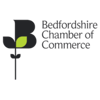Few businesses were prepared for what 2020 would bring. A global pandemic? It certainly wasn’t what anyone expected as we approached the turn of the new decade. But the COVID-19 crisis has wreaked financial havoc, leaving many small business owners struggling to stay afloat.
Our latest QES results from June show that 76% of our members have seen a reduction in domestic sales. Early-stage companies, in particular, are among those that have suffered the worst.
To survive, businesses have had to pivot on the spot. Bricks and mortar shops quickly set up an online presence and restaurants transformed into takeaway services. Companies furloughed staff, and remaining employees quickly adapted to working from home.
Now, lockdown restrictions are gradually being eased. And while the short-term outlook for small businesses is different across industries, the economy is, very slowly, starting to get moving again. But what does this next stage look like? How can small businesses start to rebuild? Here, we share our tips for helping you get back on track.
1. Review the damage
Determining just how much your business has been affected by the pandemic is an important first step. If you haven’t already, compare your profit and loss and cash flow statements to last year’s numbers. This will give you a good read of how much your business has been affected financially.
Aside from the financial repercussions, there are other ways your business might have been affected. If you’ve had to furlough your staff, if you’ve cut your marketing budget down, or you’ve lost customers, you’ll need to take all these things into account when you think about rebuilding your business.
2. Go back to basics
Your business may have worked just fine before, but the post-COVID-19 world looks quite different. And businesses need to pivot in order to adjust to this new normal. For example, if you previously relied on footfall to get people into your cafe or shop, you may consider investing in a social media strategy to encourage people to get out and pay you a visit. Or, you may need to expand your digital offering to accommodate the higher numbers of people shopping from home.
The key thing to consider is how life has changed for your ideal customers. So go back to basics. What problem do you solve for your customers? How has that changed? And how can you adapt to stay relevant?
If you’re not sure, ask them. Reach out to your customers and talk to them about their challenges and their life in the ‘new normal’. And do your research. Look around at what other companies are doing, both inside and outside of your industry, for ideas.
3. Act with urgency
Identify the primary sources of revenue for your business, and take action now. This may include targeted campaigns to win back loyal customers, improving your health and safety measures, creating flexible payment terms, adjusting pricing, or reskilling your sales team in remote selling.
Before COVID-19, you may have had time to carefully consider all these ideas, indulging in months of research and analysis. But agility is more important than ever, and now is the time to adopt a start-up mindset and act with urgency.
“During the current crisis, businesses have worked faster and better than they dreamed possible just a few months ago. Maintaining that sense of possibility will be an enduring source of competitive advantage.”
4. Consider funding options
Jump-starting your business after the pandemic may require money that you simply do not have. When it comes to financing your rebuilding period after the coronavirus lockdown, there are a number of options to consider.
The Coronavirus Business Interruption Scheme (CBILS) provides financial support to businesses with an annual turnover of up to £45 million who have been affected by the coronavirus. The scheme helps small and medium-sized businesses to access loans and other kinds of finance of up to £5 million. The government guarantees 80% of the finance to the lender and pays interest and any fees for the first 12 months.
This scheme is open to all sectors except for banks, insurers and reinsurers, public-sector bodies, and state-funded primary and secondary schools. The maximum length of the loan will be up to three years for overdrafts and invoice finance facilities, and up to six years for loans and asset finance facilities.
The Bounce Back Loan Scheme (BBLS) is available to businesses through a number of accredited lenders across the UK. Businesses can apply for between £2,000 up to 25% of their turnover. The maximum loan available under the scheme is £50,000. The government will cover the interest payments for the first 12 months.
Chamber members can benefit from the new Chamber Finance Finder, which allows fast and simple access to all funding options across loans, equity and grants. It also provides exclusive benefits, including a finance hotline and a free financial health check.
Though the economy is slowly starting to move again, we are still a long way from business as usual. As BCC Director General Adam Marshall says, “Broader efforts to boost business and consumer confidence will still be needed to help firms trade their way out of this crisis.”
But small businesses need to take action now. By reimagining how you can recover and operate in the new normal, you can set the foundations for lasting success.





![The Bedford College Group logo [WHITE]](https://www.chamber-business.com/hs-fs/hubfs/The%20Bedford%20College%20Group%20logo%20%5BWHITE%5D.png?width=139&height=81&name=The%20Bedford%20College%20Group%20logo%20%5BWHITE%5D.png)
